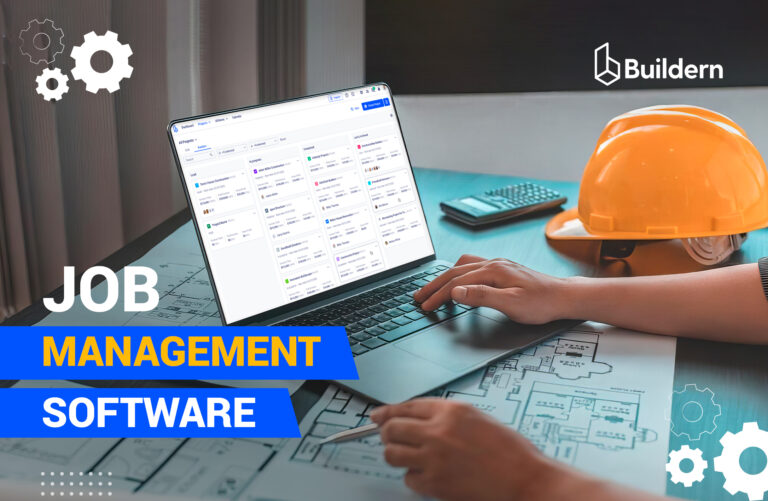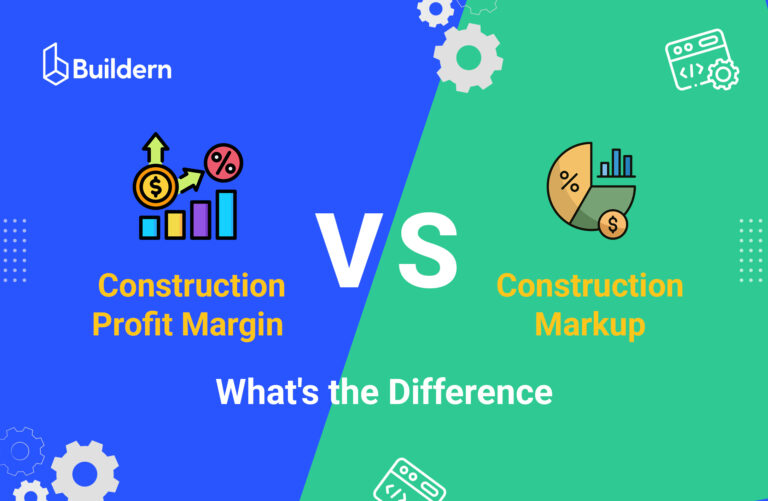Construction Cost Codes 101: Tips to Build Smarter, Not Harder
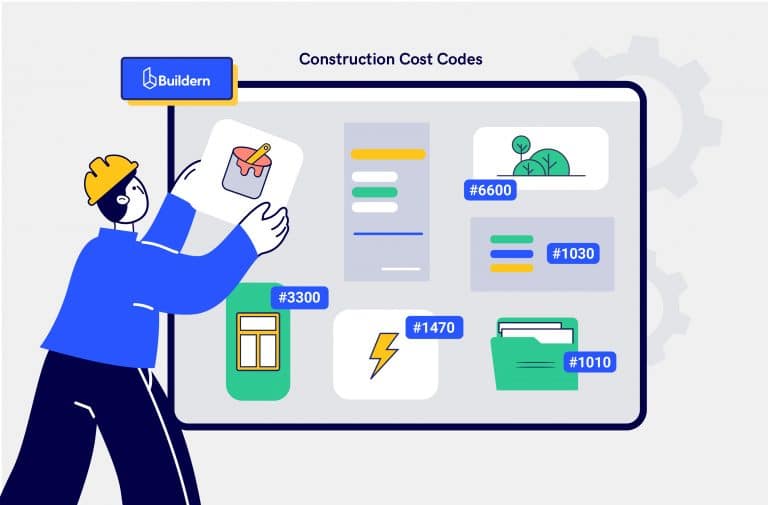
Disorganized project planning, ineffective communication among team members, and going over budget can wear anyone out in the construction sector. At some point, builders concerned with these wish they had a magic wand to run their construction projects like well-oiled machines, with streamlined processes, efficient cost management, and clear communication among all stakeholders. That world is within your reach today, and the key lies in construction cost codes.
In this article, we will delve into the fascinating world of cost codes and explore how they can revolutionize your project management approach. From eliminating guesswork to enhancing collaboration, cost codes hold the power to transform your construction business for the better.
What’s the role of technology cost code management, and how cutting-edge software solutions can help you improve construction efficiency?
Let’s dive in to find out!

Everything to Know to Get Started with Construction Cost Codes
What Is a Cost Code in Construction?
Acting as the backbone of construction projects, construction cost codes enable builders to better manage their projects by breaking them down into smaller, more manageable pieces. Construction cost codes typically come in several levels, each with its own unique number. Also known as CCS or CPC, which opens as cost control systems and cost per code, respectively, these numbers allow construction team members to quickly identify and classify costs, materials, labor, subcontractors, and other resources.
The standard construction cost codes list resembles the Construction Specifications Institute (CSI). Yet, companies are not obligated to use the standard lists as these codes are specific to the company and not the project. That said, every company is free to develop its unique cost code lists to reflect its needs and project requirements better.
Think of cost codes as the GPS navigation system for your construction projects. Each code maps out a specific aspect (or element) of a project, such as a task, an activity, or even a component. This structure helps builders organize projects at all levels, from job estimating to tracking.
For instance, you might assign each project phase its unique cost code and divide these into major and minor components using multiple cost codes. In this way, the system allows everyone to instantly see exactly what tasks are being worked on and how much progress has been made.
What Is the Ideal Number of Cost Codes for Effective Management?
Unfortunately, no one-size-fits-all answer to the ideal number of cost codes exists.
Though, it’s important to strike a balance. Too few codes may result in insufficient granularity, while an excessive number of codes can become overwhelming and cumbersome to manage.
The number of cost codes you’ll need to manage your construction projects depends on the complexity and scope of the project. Generally, builders divide their projects into various cost categories, such as labor, materials, equipment, subcontractors, permits, and overhead costs. Each category can be further broken down into specific cost codes that capture the project’s unique aspects.
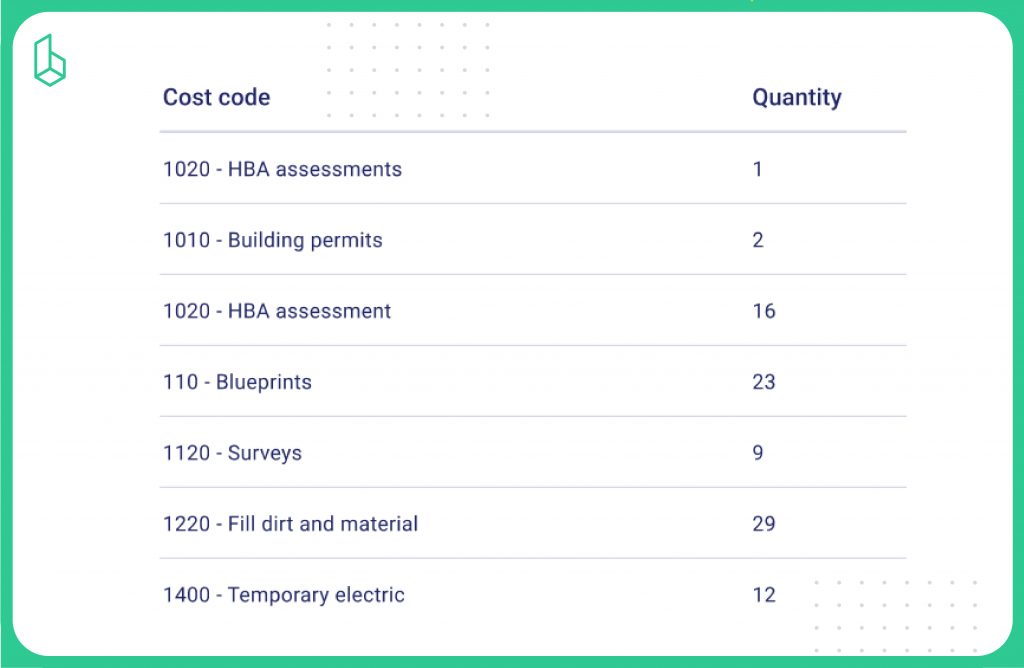
A good strategy is to begin by establishing a selection of fundamental cost codes that encompass the vital components of your projects and can be consistently applied across various jobs. As you become experienced and come across specific cost items unique to your projects, you can expand the code library accordingly.
Just remember, the goal is to have an adequate number of codes to offer valuable information and facilitate efficient cost management, all while avoiding needlessly complicated processes.
Benefits of Implementing Construction Cost Codes
A professionally organized system works wonders, especially when you have the right technology to back you up. By streamlining processes and correctly assigning costs with cost codes, construction teams can benefit from improved efficiency, savings, and better resource management.
Anyways, besides eliminating chaos and clutter, implementing construction cost codes can bring a number of vital advantages to your projects. Let’s take a look at some for a bigger picture.
Accurate Cost Estimates
Construction accounting cost codes are the core of unit pricing, one of the main estimating approaches.
By utilizing construction cost codes, builders can generate accurate cost estimates for their projects. The predefined numbering systems associated with cost codes allow for a systematic breakdown of tasks or phases, enabling industry professionals to allocate costs more precisely. With accurate cost estimates, you can make informed decisions during bidding, increasing the likelihood of securing profitable projects.
Better Record-Keeping
Contributing to enhanced record-keeping practices within the construction industry, cost codes provide an easy way to create and track project-specific data across various teams and departments. With a well-defined system in place, you can easily review job performance and translate data into meaningful insights.
Accessing accurate and comprehensive records through cost codes enhances transparency and facilitates compliance with regulatory requirements. This, in its turn, accelerates the entire process from start to finish.
Data Standardization and Sharing
Cost codes enable construction teams to move away from paper-based tracking systems and towards digital solutions. As modern-day digital accounting solutions come with built-in cost codes, they allow teams to share data across multiple departments without the hassle.
Seamlessly integrating with modern accounting systems, cost codes further streamline financial management processes. With the use of specialized construction accounting software, cost codes can be directly linked to various financial transactions, such as purchase orders, invoices, and payroll entries. Such integration ensures accurate and automated recording of costs under the appropriate codes.
So, whether a builder chooses to run all their project-related accounting calculations in a single tool or opts for a more advanced technology like construction project management software, the uniformed cost codes help alleviate data discrepancies by providing a unified language.
The Smartest Way to Get Started with Construction Cost Codes
Investing in construction project management software is a smart move for builders looking to streamline their operations and improve cost code management. Such solutions provide a centralized platform for various project-related tasks, including budgeting, estimating, accounting, making proposals, and enhancing team-client relationships.
Moreover, those involved in construction management have probably come across Xero or Quickbooks, two popular online accounting solutions. Such platforms promote the efficient management of all construction-related expenses, including those associated with cost codes.
Yet, as tricky as construction accounting is, many builders find it difficult to integrate their existing expense-tracking systems with accounting tools. In such cases, specialized construction project management software like Buildern offers an extended pack of features, making integration with third-party accounting solutions much easier.
Add Cost Codes to Your Buildern Account Now!
Buildern creates a convenient and secure platform for all your construction projects by offering two-way integrations with major construction accounting software. That said, whether you are a current or former Xero, Quickbooks, or even Buildertrend user, you can transfer all your accounting information and even the premade cost code lists with just a few clicks.
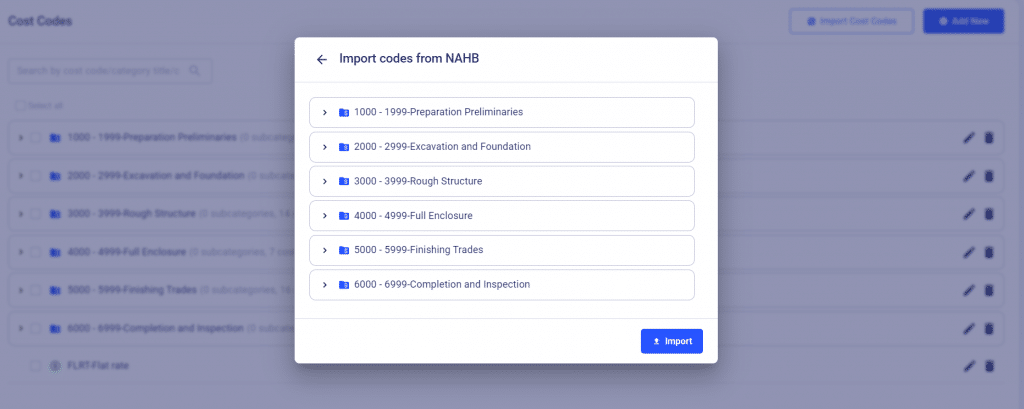
Getting started with cost codes is as easy as pie with Buildern, as once you register in the software, the two standard construction cost code systems appear in your dashboard.
You can also import your data from an Excel or CSV spreadsheet or create customized cost codes from scratch right from Buildern’s professional dashboard.
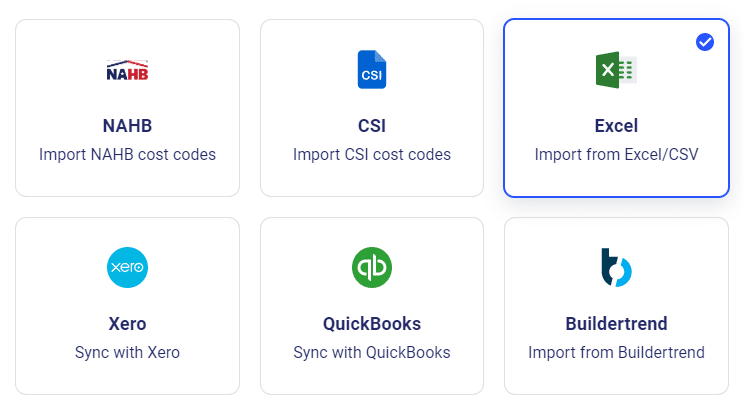
Once you have a final list of cost codes, you can rest assured that the data will be synchronized and shared with team members and stakeholders through every document you create and mail. That way, you can track all your expenses and manage the budget according to each cost code’s sub-level.
Why Choose Buildern Above All?
The flexibility and comprehensive features offered by Buildern make it an excellent choice for builders looking for a powerful, all-in-one solution for construction project management. Its functionality goes beyond cost code management and accounting.
Imagine a platform encompassing all the third-party tools used separately to manage your projects. The endless piles of spreadsheets and templates create a sense of chaos for your team. Buildern brings it all together in one centralized space, providing time efficiency and eliminating double data entry.

5 Insider Tips to Develop a Flexible System of Cost Codes in Construction
Have you ever wondered how to develop a solid reputation for your business?
Staying ahead in today’s competitive landscape requires efficient processes and effective tools. To get the most out of your construction cost codes, there are a few key tips to keep in mind.
1. Understand Your Project’s Unique Needs
If you want to develop a flexible system of cost codes, start by thoroughly analyzing and assessing your construction needs. With a clear understanding of the project’s scope and objectives, you can accurately determine cost items to track and monitor.
For example, if you often work on a large residential or commercial construction project, you may need more detailed cost codes to track various trades, subcontractors, and materials. Acting smarter requires having a clear idea of what you need to measure.
2. Involve Key Stakeholders
Construction management is not a one-man show. To ensure that cost codes are adequately implemented and managed, involve key stakeholders. This includes but doesn’t limit to project managers, estimators, accountants, and field personnel, i.e., people who work closely with the project and have an in-depth understanding of its specific needs.
Involving team members allows everyone to bring their unique perspective and expertise that can significantly enhance the effectiveness of the cost code system.
That said, project managers provide strategic oversight and have a holistic understanding of the project. Their involvement ensures the codes align with the project’s goals and objectives. They can provide insights on specific cost categories critical for project success and guide the development of the hierarchy and structure of the codes.
On the other hand, estimators are experts in cost estimation and can contribute their knowledge to ensure the code system accurately captures all necessary cost elements. Working with them will help create realistic budgets, identify potential cost-saving opportunities, and ensure that cost estimates align with the project’s scope.
3. Start with a Hierarchical Structure
Avoiding chaos is probably why a builder decides to start with cost code system development. While hierarchy helps to see the bigger picture and maintain structure, it also allows for detailed tracking and analysis of construction costs.
Hierarchy provides a systematic framework that allows project managers and stakeholders to drill down into specific cost categories, identify areas of concern, and take appropriate actions to address them. The hierarchy enables detailed analysis and cost tracking by breaking down costs into granular subcategories.
For instance, once you have a numbered general category for concrete-related materials, you can further break it down into subcodes like
- Concrete materials used in the foundation
- Materials used in the slab construction
- Materials used in the construction of columns
The hierarchical structure promotes consistency and standardization across projects. It provides a common language for cost tracking and analysis, ensuring all team members consistently understand and use the codes. This consistency facilitates collaboration, enables accurate project comparisons, and allows data aggregation for benchmarking and performance analysis.
4. Integrate Technology Solutions
Leveraging technology to streamline and automate your cost code management can significantly enhance cost tracking and analysis efficiency and accuracy. By integrating advanced tools, construction professionals can optimize the management of cost codes and gain real-time visibility into project flow.
Construction management software allows for the seamless integration of cost codes into the project management processes. With software like Buildern, cost codes can be easily created, assigned, and tracked throughout the project lifecycle.
Moreover, integrating the system with third-party accounting solutions will eliminate the need for manual data entry, reducing the chances of errors and enhancing the process of cost tracking.
5. Regularly Evaluate the System
Last but not least, keep in mind that your cost code system is subject to variation over time. Once the project is complete, go back and evaluate the effectiveness of your system. Identify areas that need improvement and update cost codes accordingly.
The post-project analysis suggests a thorough review and objective estimation of the system, providing essential insight into the areas of improvement. Start with comparing the actual costs tracked using the codes with the estimated costs to identify any possible discrepancies or areas for improvement.
For instance, you may find that certain cost codes are too broad, making it challenging to analyze specific cost elements accurately. If something like that happens, the hierarchy can be revised to include additional subcodes or reorganize existing codes for better granularity and tracking.
System evaluation also includes seeking feedback from project stakeholders to gather their insights and suggestions for code system improvement. They may have identified challenges or opportunities during the project that can inform code revisions.
Regular evaluation and updating of the cost code system demonstrate a commitment to ongoing improvement and optimization of cost management practices.
Standard Construction Cost Codes List
Of course, coming up with a unified and well-structured system of cost codes is a hard task. You can use the standardized CSI (Construction Specifications Institute) or NAHB standard home builder cost codes systems to get started.
Here’s a brief list of general cost codes to better understand each system.
CSI Standard Construction Cost Codes
- 00: Procurement and contracting requirements
- 01: General requirements
- 02: Existing conditions
- 03: Concrete
- 04: Metals
- 06: Woods, plastics, and composites
- 07: Thermal and moisture protection
- 08: Openings
- 09: Finishes
- 10: Specialties
Find out more at CSI’s MasterFormat.
Each umbrella cost code has sub-levels, allowing you further to break down the items into more specific categories.
NAHB Standard Home Builder Cost Codes
The National Association of Home Builders has developed a unique list of codes for tracking, managing, and reporting the amounts, profit, budgeting, and other project-related jobs.
For instance, the umbrella code for land development is 2-00-0000, according to the NAHB system. The decision to subcategories then goes as follows:
- 02-01-0101: Appraisal fees
- 02-01-0102: Attorney fees
- 02-01-0103: Environmental reports
- 02-01-0104: Extension fees
- 02-01-0105: Option fees
- 02-01-0110: Land acquisition expense
Find out more at MCBIA’s official website.
These systems provide a general guide for setting up cost codes and serve as a starting point for creating your own customized system.
Key Takeaways
As an integral part of any financial report and budgeting system, cost codes are essential for the success of construction projects. Not only do they ensure an enhanced workflow, but they also enable the efficient management of every aspect of a build.
CSI and NAHB standard systems provide builders with the foundations for setting up their own cost codes. However, with the sheer number of codes involved and the complexity of construction accounting, it is no surprise that many builders find it difficult to customize and align the systems with their building objectives.
That’s why Buildern is a great choice for construction teams looking to make the cost code management process easier and more efficient.
Its comprehensive features enable builders to synchronize cost codes across all business documentation while keeping the data safe in a single centralized space. When keeping track of the workflow through spreadsheets, this can seem like an impossible task. The chaos can become overwhelming with all the endless piles of documents and texts.
So, what are your thoughts on cost code management?
Don’t settle for outdated and inefficient methods! Upgrade your construction project management to embrace the future of construction project management and join thousands of builders across the globe enjoying cutting-edge software.
Bet you won’t regret it!

